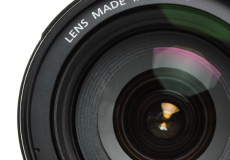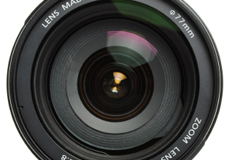By
Debra KaufmanApril 14, 2020
Apple just submitted an application to the U.S. Patent and Trademark Office for a light field panoramic camera system for next-generation iPhones, iPads and head-mounted displays (HMD). With the camera, the user will be able to capture images (as well as position and orientation information) by holding up the device. Processing the images for relative positions and depth information, the light field panorama will allow a viewer to explore 3D views of the image with 6 degrees of freedom (DOF). Continue reading Apple Files Patent for Light Field Camera System with 6DOF
By
Phil LelyveldJanuary 8, 2020
Wooptix approaches the problem of light-field image capture in an interesting way. Using a single camera lens, they capture the same image at multiple depth-of-field settings. They then assemble a 3D version of the captured image by identifying and grabbing the areas of each depth-of-field image that are in focus. The result is a clear, if slightly flat and layered, 3D image with some degree of parallax. The company’s tech could have multiple applications. Continue reading CES 2020: Wooptix Creates 3D Images From a Single Lens
By
Debra KaufmanJuly 29, 2019
Fyusion, a computer vision/machine learning company, is demonstrating a new 3D imaging technology this week at SIGGRAPH 2019. The technology, aimed at providing digital marketers with photoreal images of products and scenes, uses light field technology to attain greater realism. The company has raised $70 million, including $3 million from Japan’s Itochu trading company and a “strategic investment” from Cox Automotive. The software is already being used for commercial purposes in automotive, retail and fashion industries. Continue reading Fyusion Demos Photoreal 3D Imaging Tech at SIGGRAPH
By
Debra KaufmanApril 11, 2019
The Immersive Digital Experience Alliance (IDEA) has debuted, with the stated goal of creating royalty-free specifications for all immersive media formats, including light field technology. The Alliance’s founding members include CableLabs, Charter Communications, Light Field Lab, OTOY and Visby. The Alliance has started developing the Immersive Technology Media Format (ITMF), slated for release in 2019, which the group believes will “serve as an interchange and distribution format that will enable high-quality conveyance of complex image scenes.” Continue reading Immersive Digital Experience Alliance Launches at NAB 2019
By
Debra KaufmanMay 30, 2018
During Display Week in Los Angeles, several VR headset displays were showcased by companies including Google, LG, Japan Display and Samsung. Google and LG developed a display panel with 18.1 megapixels of detail per eye, which was similar to those from Japan Display and Samsung. The Google/LG panel, at 18.1 megapixels, goes up against Oculus Rift’s 1.3 megapixel per eye and HTC Vive Pro’s 2.2 megapixel per eye. Facebook was also at Display Week, but wasn’t quite ready to show off its Half Dome varifocal prototype. Continue reading Manufacturers Show Higher-Res VR Headset Display Panels
By
Debra KaufmanApril 20, 2017
Startup Light Field Labs, founded by three former Lytro engineers, is working on creating holographic displays via light field technology. The goal is to create a TV set that can project a 3D hologram into the living room, with the further-off goal of enabling the user to touch it. Although that might sound like science fiction, the company founders stand behind their idea, and state the company will be able to ship a few displays to developers in 2018. Commercial production will be in operation by 2019 or 2020. Continue reading Startup to Introduce Holographic TV Technology at NAB 2017
By
Debra KaufmanSeptember 1, 2016
Up until now, virtual reality content from The New York Times, the United Nations, Facebook, YouTube and others is actually more accurately described as 360-degree video. What that means is that, although it is immersive, the viewer can’t move inside the VR experience, limited to three “degrees of freedom” (3DOF). In computer-generated videogames, the player has six degrees of freedom (6DOF), and Lytro has advanced its plans to bring that to cinematic virtual reality with its light field camera system. Continue reading Lytro Debuts First VR Film Shot with Immerge Camera System
By
Debra KaufmanJuly 13, 2016
The Walt Disney Company has invited nine new companies into its 2016 Accelerator program. Disney Accelerator, now in its third season, has gained a desirable profile as several alumni have inked partnership deals with Disney. Among them are Sphero, creator of the BB-8 droid “Star Wars” toy and sports data platform StatMuse, which now works with Disney’s ESPN. One of this year’s invited startups, says The Walt Disney Company’s senior vice president of innovation Michael Abrams, is an internal project team. Continue reading Disney Accelerator’s New Startups Address Robotics, AI, VR
By
Debra KaufmanOctober 23, 2015
Magic Leap, the Florida-based company that raised $542 million from Google, Qualcomm and others last year, demonstrated how it plans to marry the real world with virtual, computer-generated content. Magic Leap demonstrated its technology at The Wall Street Journal’s WSJDLive conference in Laguna Beach, California with a concept video that shows the user interacting with a tiny robot gimbal hiding and ducking behind the legs of a real table. The user also brought up a virtual solar system in the real office environment. Continue reading Magic Leap Demonstrates Its Augmented Reality Technology
By
Debra KaufmanAugust 20, 2015
Much has been written about the more obvious issues in viewing virtual reality. Top of the list is the motion sickness that some people get, a result of the mismatch between what they see and what they feel. But there’s another issue — an eye-focusing problem dubbed “vergence-accommodation conflict” — that is specific to virtual reality and is much more difficult to overcome than motion sickness. At SIGGRAPH 2015, scientists from Stanford and UC Berkeley described potential solutions. Continue reading SIGGRAPH: Scientists Tackle Neuroscience Obstacles to VR



